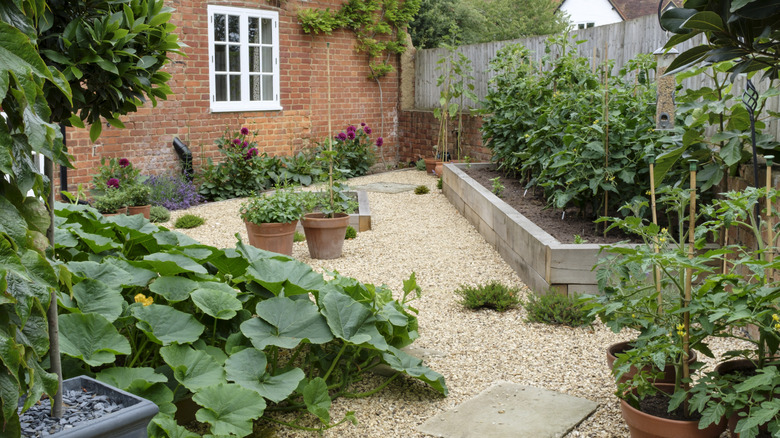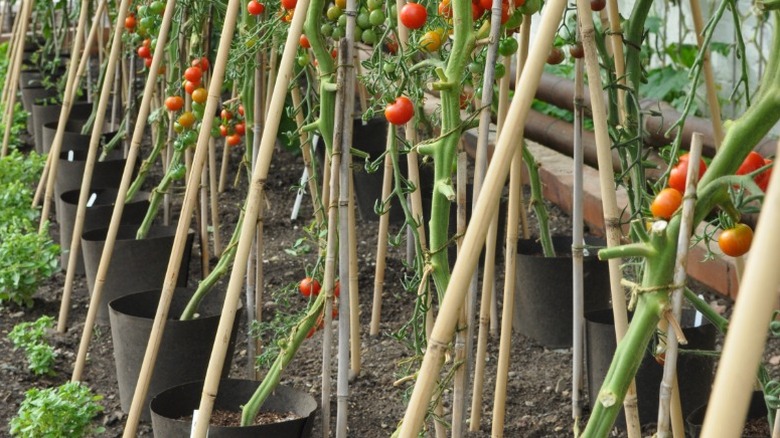Can You Grow Tomatoes In Gravel? Here's What You Should Know
Tomatoes are one of the most popular home garden vegetables, and gardeners across the U.S. are always looking to yield a healthier crop with less effort. Enter ring culture, which places tomato plants in a bottomless pot (the ring), filled with a good growing medium such as potting mix or compost, onto a gravel or other coarse aggregate base, to grow and produce a good crop. So technically, your tomatoes are growing "on" but not totally "in" gravel, which is ideal for those who have poor soil or no room to plant in the ground.
Ring culture is an easier alternative to replacing the soil each season, if you've had problems with tomato diseases in the past. It allows for two root zones to develop with the first set of roots sitting in the ring filled with a soil or compost mixture, and taking in nutrients. The longer roots grow out of the bottom of the ring into the gravel and take in additional water. This method provides a number of benefits. It keeps the foliage off the ground, which can help prevent cracking and splitting of the tomato fruits. Plus, growing on gravel provides a cleaner environment free from diseases and pathogens that may be present in the soil, and can splash onto the plants while watering. The gravel base can be reused for many years, making it an economical choice once the system has been set up.
How to set up a ring culture system
A ring culture system can be constructed by first digging a trench and lining this with polyethylene plastic, also known as poly or greenhouse plastic sheeting. The poly is then perforated evenly to allow water drainage and to keep the gravel separate from the soil beneath, preventing contamination. Fill the trench with 6 to 10 inches of gravel.
Plant your tomatoes into the bottomless pots, which should be 8 to 10 inches in diameter and 10 to 12 inches high, and filled with high quality potting soil or compost. Before filling your "pots", place them onto the gravel base you've created. Space your rings 16 inches apart to avoid overcrowding and allow proper airflow. Once your plants are growing make sure you keep the gravel moist, and water the tomato plants, at the soil level, two or three times a week, adding fertilizer as recommended. Make sure to follow the simple watering tip to keep your tomatoes thriving and free of disease.
You'll also want to know how to prune tomatoes to get the best results from your efforts and keep your plants healthy and free from disease. At the end of the day, growing tomatoes on gravel is a good way to produce an optimal crop in a small garden space, or in an area that's previously had problems with diseases such as blossom end rot.

